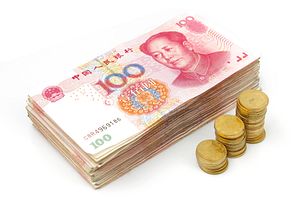The Chinese dream of obtaining funding freely and easily has come up against harsh reality in the peer to peer (P2P) lending industry. Although P2P company Renrendai announced in January that its parent company had received $130 million in Series A funding and Dianrong.com announced $12 million in first round lending, the P2P lending industry has experienced a growing number of platform collapses or withdrawal difficulties, with 58 companies going bankrupt in the fourth quarter of 2013.
Some analysts have likened the P2P lending model to a “Ponzi scheme,” attracting lenders through high interest rates, and using the lent funds to pay off preceding lenders. In the most recent P2P news, three P2P lending platforms in Hangzhou, Shenzhen and Shanghai collapsed, and their owner is nowhere to be found.
P2P platforms have been viewed as potentially more efficient beneficiaries of big data—and some, that mine their own data like Alibaba and Baidu may be—but because of the actual barriers to the distribution of data on credit histories and other key information for the vast majority of P2P lending companies, the P2P lending model has been less efficient than that of regular banks. P2P firms must often interview borrowers in person, and they have not been entirely successful in determining good credit risks. They also face steep marketing expenses in order to appear as credible businesses since they lack the reputation that banks have already established.
Moreover, a large risk has been presented by the business model that some P2P firms follow. Businesses that use the model set forth by Yixin Company in 2006 apply a type of lending called debt assignment, in which the platform itself lends money to borrowers before finding investors to channel their funds into these loans. Under this model, the investors may end up lending to several borrowers, or several investors may lend to one borrower. In some cases, loans are pooled and the debt is transferred to investors.
This type of model is not clearly legal and may make it easier to commit financial fraud, since the use of the funds is very opaque. Since the original relationship between borrower and lender is obscured by this mode, there is additional responsibility on the shoulders of the P2P lending company to ensure that the borrower is creditworthy. Credit risk is compounded in cases where the principal has been guaranteed, and P2P lenders may rapidly face a crisis of liquidity or solvency when borrowers become delinquent.
Although not all P2P lending platforms are Ponzi schemes, attracting funds to cover liquidity shortages may be an all-too attractive option for some of these companies. Under the current system of regulation, P2P companies do not face the same restrictions that banks face, since they are not a registered financial firm type. This, coupled with a lack of sufficient financial information and lending expertise has created a weak institutional structure in these firms that, if not doomed to failure, will certainly constitute a challenge to success going forward. Regulatory measures that have aimed to curb worst practices of P2P lending companies, including requiring such firms to deposit client funds in third party accounts, are insufficient. Further regulations are expected this year.
While the P2P lending model works well when there is sufficient information, in China’s financial environment this model faces real barriers to healthy expansion. The alternative to P2P lending platforms, until there is improvement in loan expansion by banks to smaller borrowers, is to return to traditional informal financial methods in which parties know each other and both have “skin” in the game.
Sara Hsu is an Assistant Professor of Economics at the State University of New York at New Paltz and has written extensively on Chinese shadow banking and informal finance.

































